Courthouse history
Many visitors to Randolph County Courthouse may not realize that what they see from the street is actually the building’s “second skin.” Underneath its ‘80s brick façade was once an example of mid-century style.
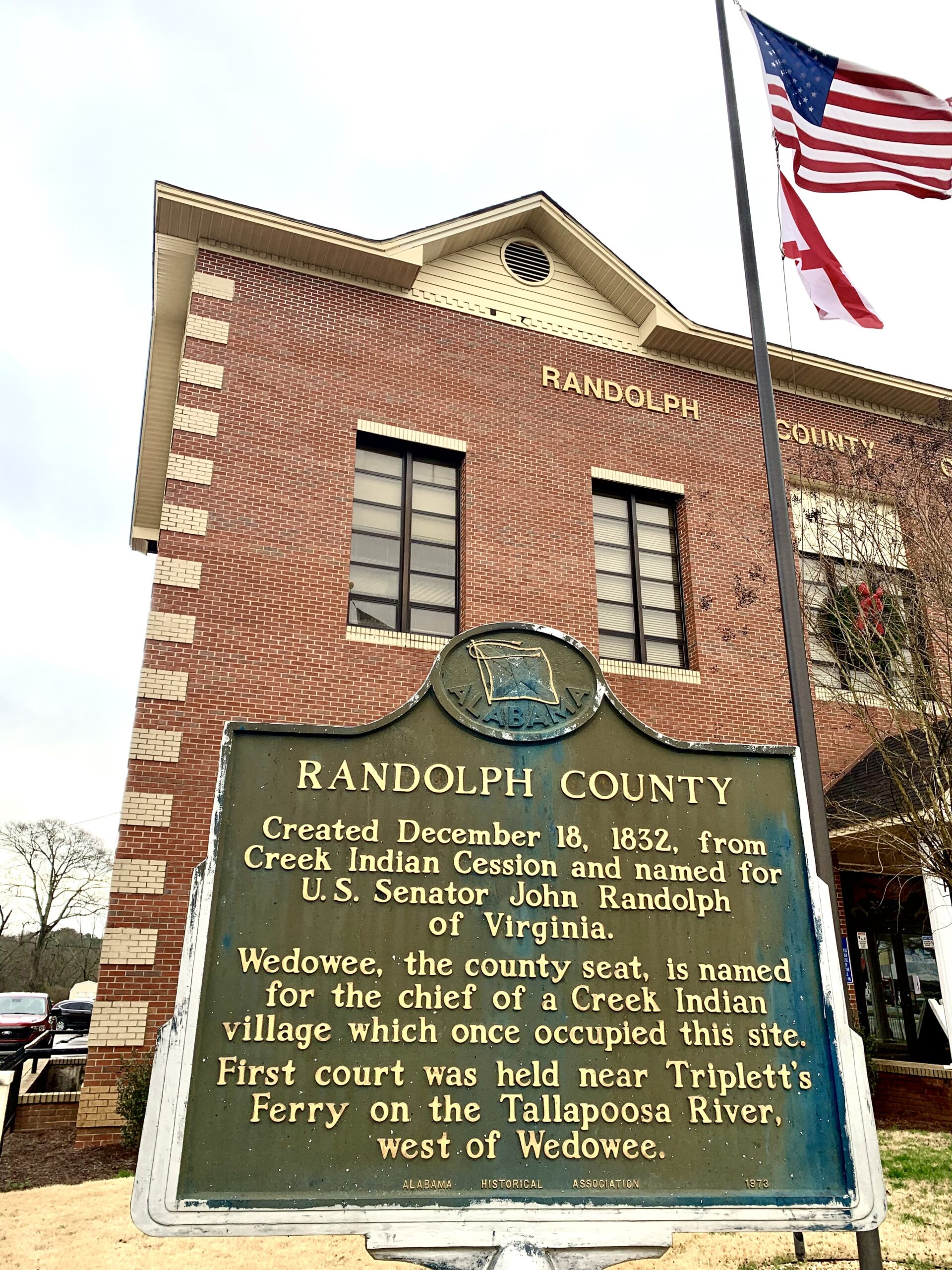
When Randolph County was established in 1832, Wedowee wasn’t the first county seat. That was a community referred to as Triplett’s Ferry (later called Blake’s Ferry), which was 10 miles west of Wedowee on the Tallapoosa River. The first circuit court was said to have been held on a flat rock near the river. County court with Judge Archibald Sawyer was held there under an oak tree on the west bank of the river.
The county seat was moved in 1834 to the more centralized town of Wedowee, where circuit court was at first held in Chief Wedowee’s hut. In 1836, Sheriff William Hightower provided a log hut with a dirt floor as the county’s first courthouse. The following year, the county commission instructed his successor, Sheriff Willis Wood, to provide a judge’s seat, clerk’s table, seats for the jury and a door for the building.
In September 1839, the county contracted with Isaac Baker to build a new wood frame courthouse to cost $2,000. It was completed in fall of 1840. That was the year that the town post office for Wedowee became known as “McDonald.” The community protested, and this lasted only four years before it was changed back to Wedowee.
A new brick courthouse was built in 1857 by Mr. McCann of Talladega at a cost of $10,000. A devastating fire in December 1896 destroyed this courthouse and all the county’s records. Only dampness from recent rainy weather saved nearby structures from burning as well. The effects of this loss are still felt by researchers today.
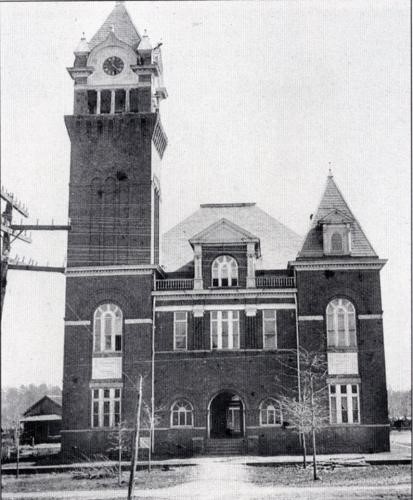
Randolph County Courthouse
(1897 – 1940)
Ground was broken for a new courthouse in April 1897 on property donated to the county by J.W. Stewart between the site of the burned courthouse and the jail. N.B. McPherson was chosen as the builder of the $17,450 brick Romanesque Revival building with a clock tower, which was completed in February 1898.
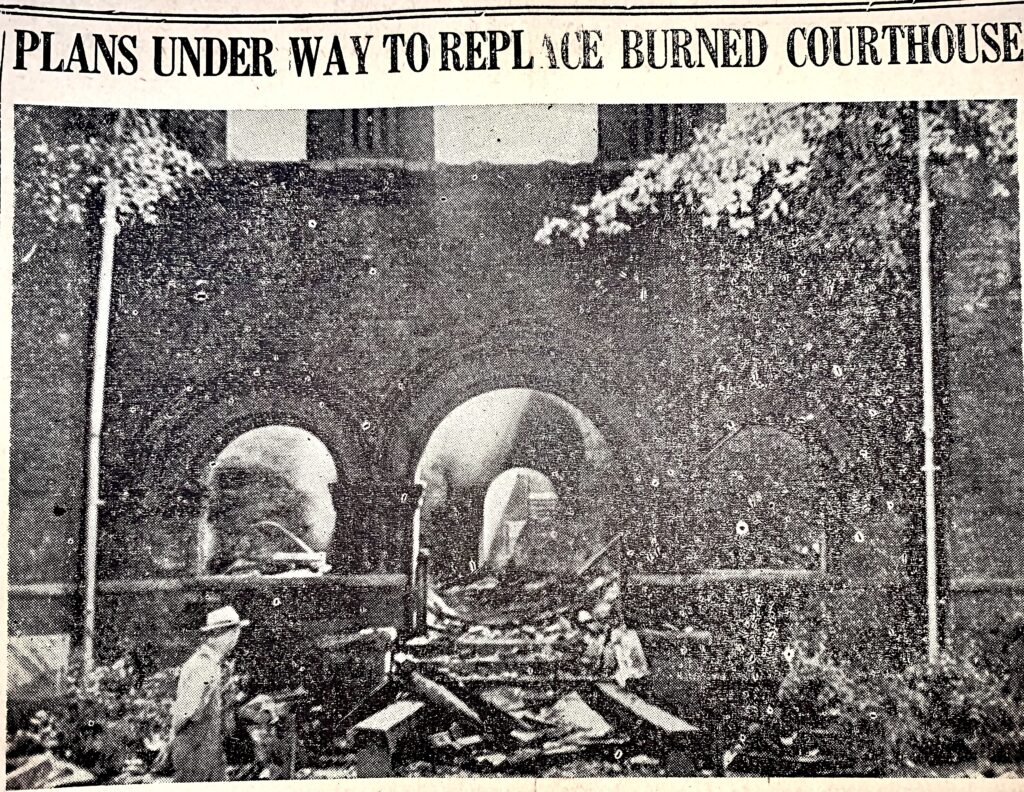
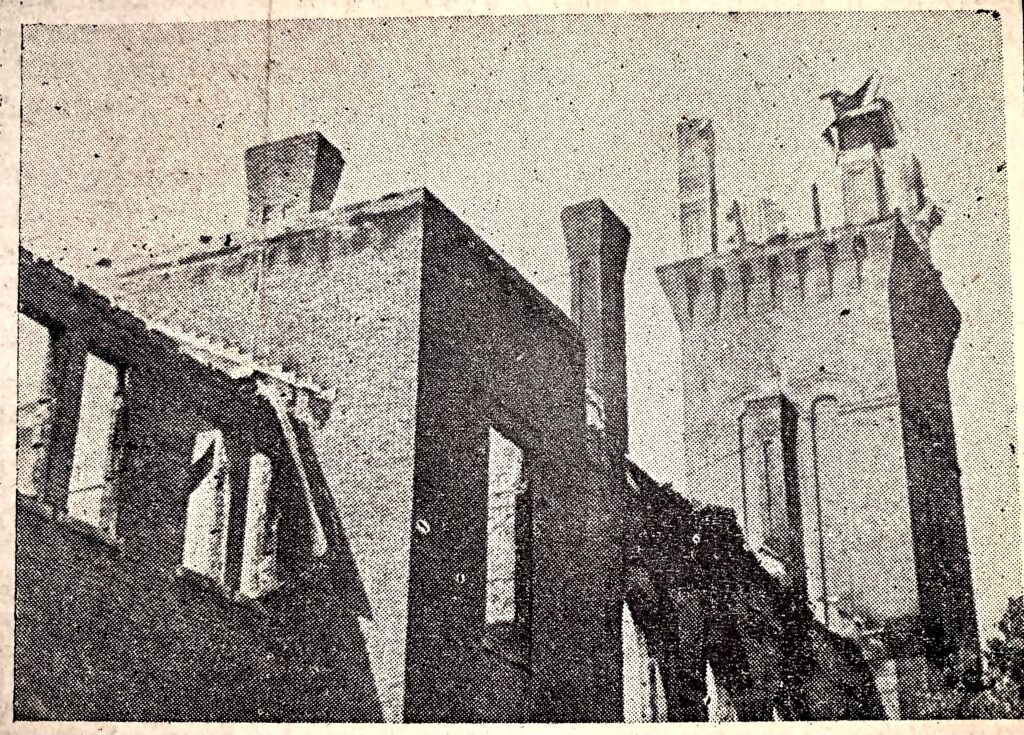
This stately building was also destroyed by fire in August 1940. Thankfully, this time most of the records were saved.
The white Art Deco-style courthouse that replaced it in 1941 was a New Deal Work Projects Administration (WPA) project, costing the county only $58,000 but valued at $200,000. Other WPA projects in the county included Roanoke City Hall (1941), Roanoke Post Office (1941-now home to Randolph County Historical Museum) and Roanoke’s gymnasium with indoor swimming pool (1939-no longer standing adjacent to Handley High School).
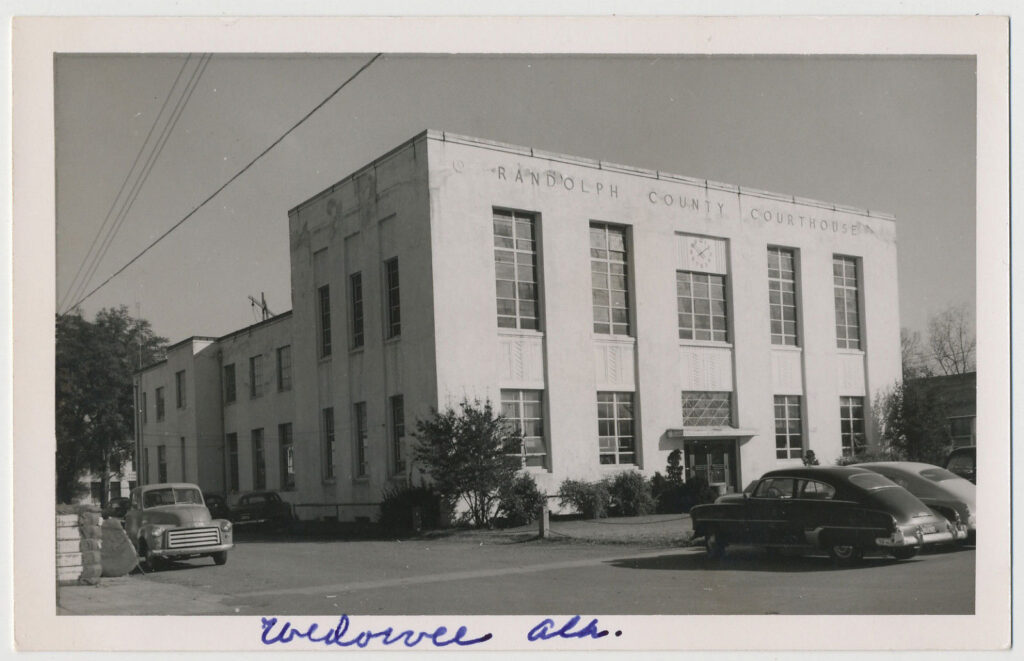
Probate Judge H.M. Brittain was able to move back into his old first-floor office in September 1941 because that portion of the building and the vault were spared, thanks largely to a fireproof vault for records that had been installed in 1937.
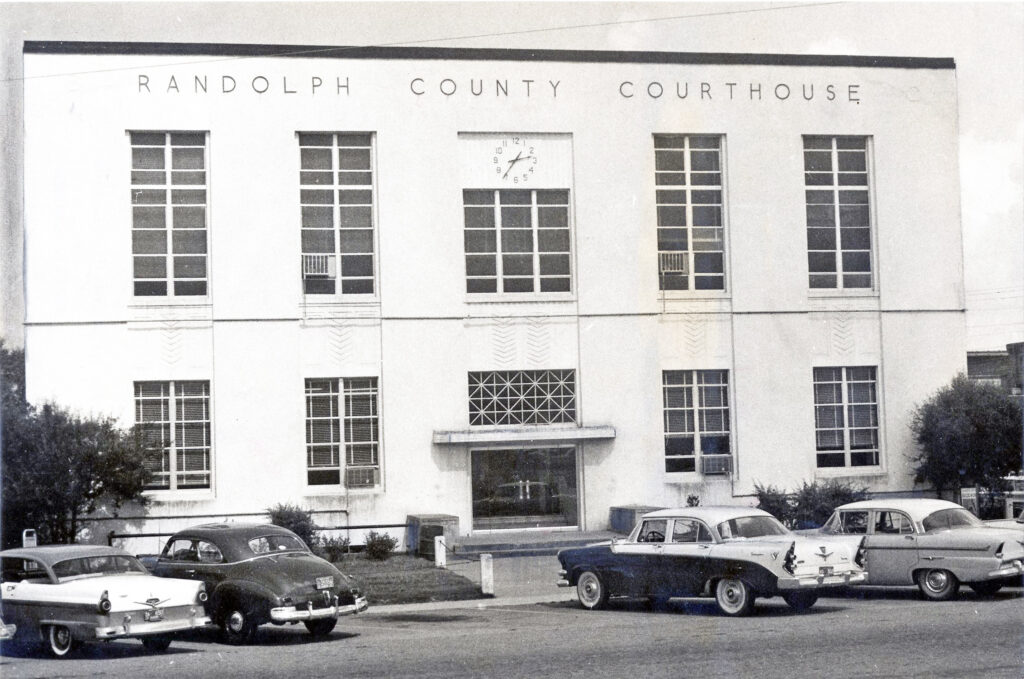
The brick makeover of the crumbling white exterior came in 1985 during a $600,000 renovation. During this time, the gables were added, the flat roof changed to pitched and other improvements were made inside, including the addition of central heat and air.
It might be appropriate to note here that the statue of the World War I soldier in front of the courthouse is the property of the town, rather than the county. It was dedicated in 1926 following The Great War, and then the names of fallen Randolph County soldiers henceforth have been added to the markers there.
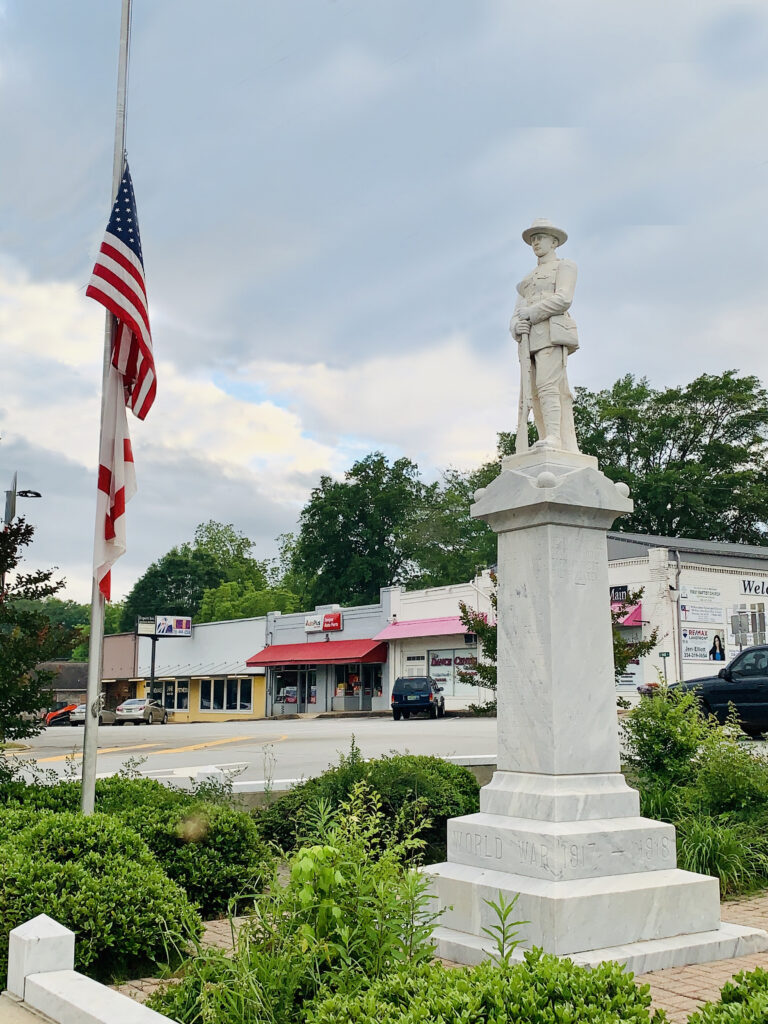
(Sources: Encyclopedia of Alabama, newspapers The Randolph Toiler, The LaFayette Sun, The Weekly Advertiser [Montgomery], The Roanoke Leader, The Anniston Star, The Birmingham News and The Birmingham State Herald, Eugenia Elizabeth Smith [thesis] and J.M.K. Guinn’s The History of Randolph County.)
